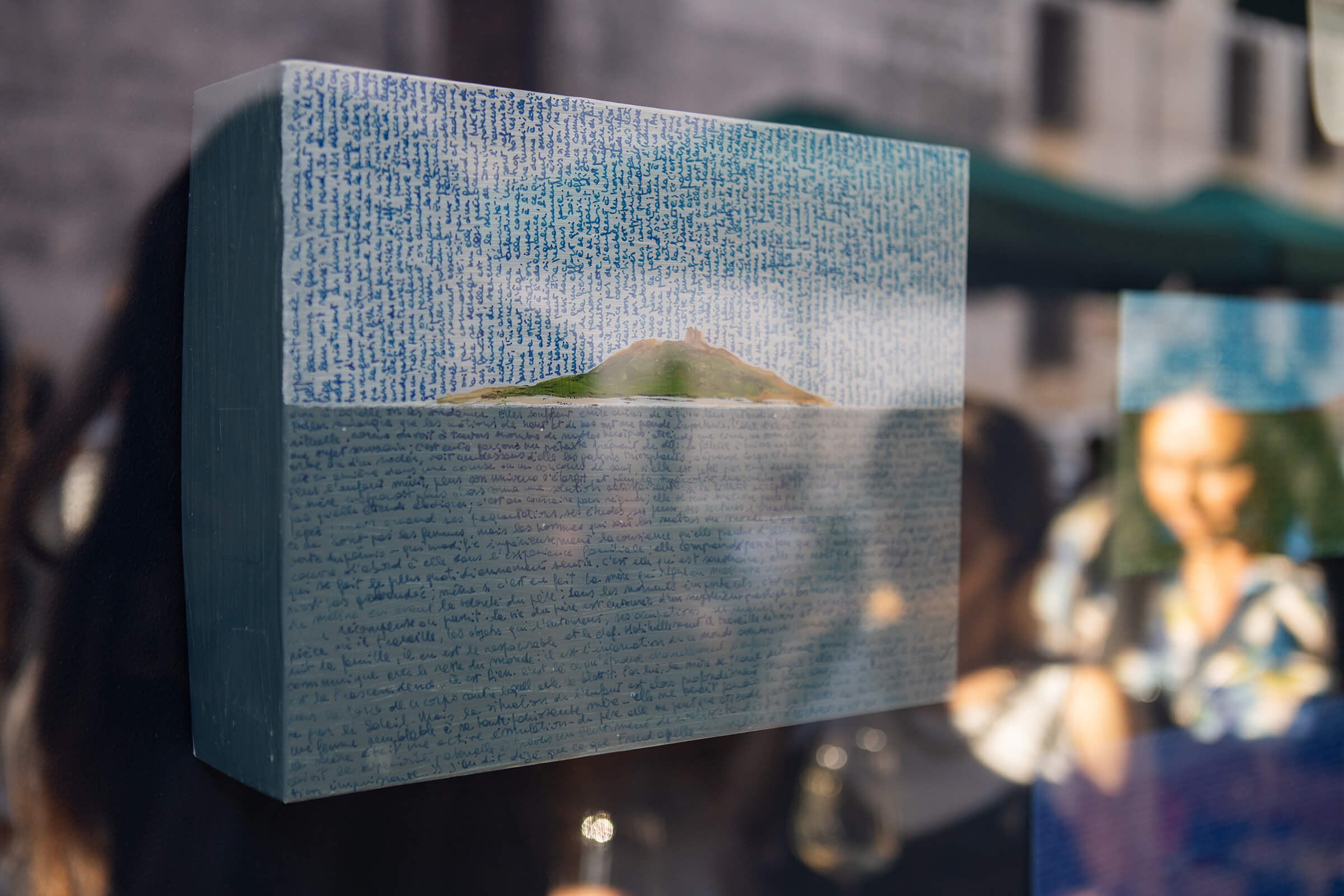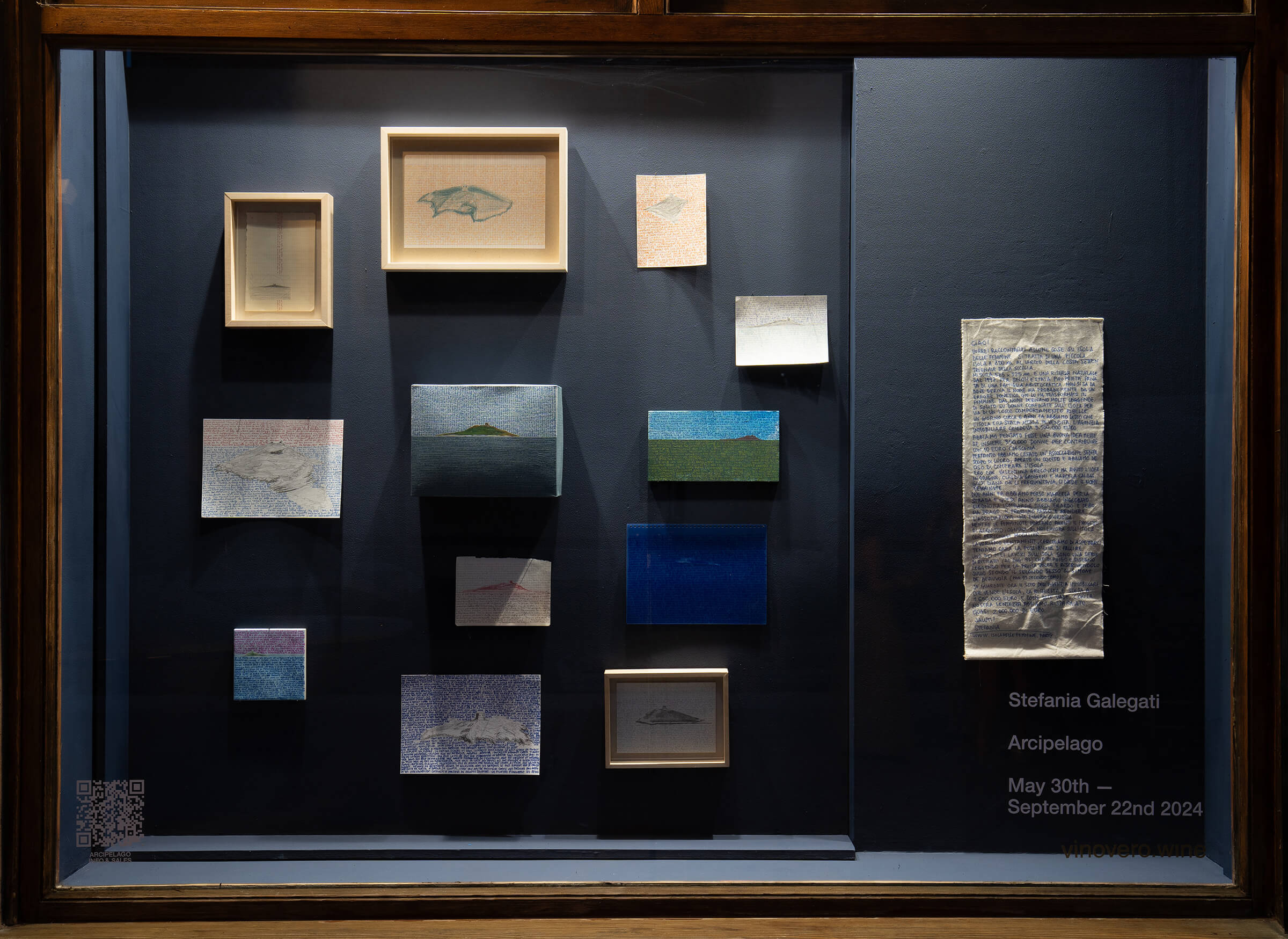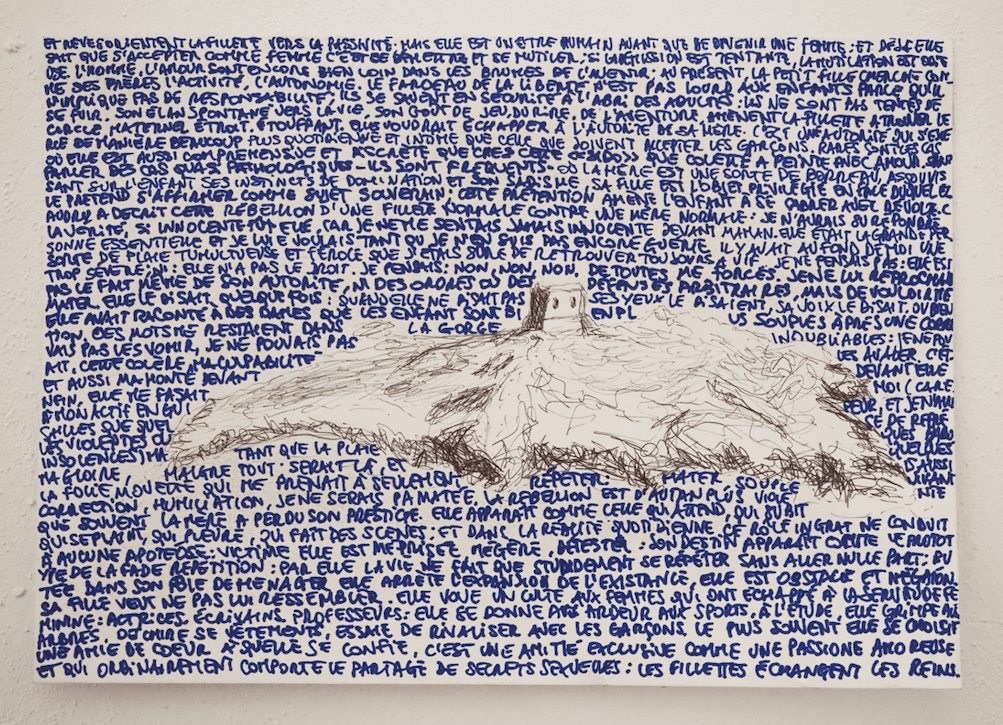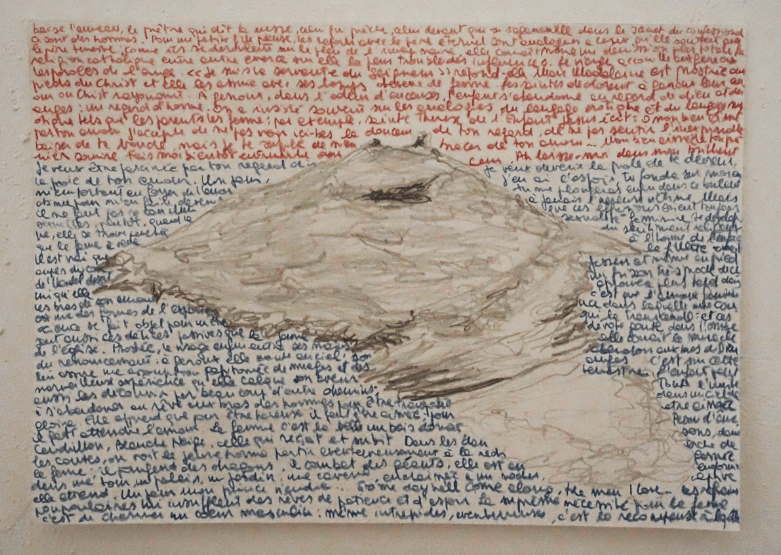Stefania Galegati: Arcipelago 2020-2024
Stefania Galegati
MS – How did the “Isole” project come about, and what were the main inspirations behind this initiative?
SG – “Isole” is a series of portraits of Isolotto, on which I write the entirety of Simone de Beauvoir’s The Second Sex as I read it for the first time. Now, after 99 paintings, I’m about on page 67 of the second volume. This intimate work supports the collective process of purchasing Isola delle Femmine, a project I’m working on with the Femminote association.

MS – How does the artistic practice of “Isola delle Femmine” engage with the island and with crucial themes such as the management of common goods, private property, and feminism? What role does the island play as a symbol or metaphor in your work?
SG – Today, I found these notes from a meeting with the other Femminote, and I think they answer your question:
An island can imagine. An island is nourished by joy. An island can turn private property into collective property. An island has room for everyone. An island can liberate time. An island can fight the patriarchal system. An island can be an outpost of thought. An island can be left in peace. The island is a heterotopia. An island already exists.

MS – Why did you choose Simone de Beauvoir’s The Second Sex as the central text for this series of works, and how does manually rewriting this book intertwine with your painting practice and personal journey?
SG – On one hand, because it is an ‘encyclopedic’ text in the history of feminism. It was translated into Italian very late, and throughout my schooling, feminism was never discussed. I felt I needed to go back and recover this by passing it through my body—through my eyes, words, mind, hands—and releasing the text once again as a pictorial mark. The text intertwines with the sky, the sea, and the island. It’s an incredibly slow practice; I’ve been painting islands for six years now.
Only through slow, repetitive practices can we reach understanding and transformation.

MS – How does the work of the association and the dialogue among its founders become an integral part of the artwork itself? Can you share an example of how these interactions have influenced or redefined the meaning of your works?
SG – Without Valentina Greco’s initial idea, none of this would exist. But without the contribution of the various Femminote who have been part of the group, we wouldn’t be here today. What women can achieve together, when there is trust, clarity, commitment, and love, is like the force of a tornado. Alongside the technical and bureaucratic aspects of pulling off such a wild purchase, we’re also trying to hold the group of women together, all with different jobs and lives. In a somewhat chaotic way, we are waiting for one another, trying to work together.

MS – What was the experience like working in a small but public space such as Vetrina, and how did you connect the Isola delle Femmine project to Venice? What challenges and opportunities did Vetrina’s space present for the exhibition of your works?
SG – I’m the third child in a family that hadn’t anticipated my arrival. Throughout my childhood, I slept in a bed that folded into a wardrobe, studied in the bathtub, and drew under tables and behind furniture. So I feel comfortable in small spaces. Except for some older drawings, almost all the paintings for Vetrina were made specifically to be small. I used a shirt box, a tile, and small sheets of paper. However, I’m really interested in how you called the space public. It’s a private space, but in terms of access, it’s public and open to anyone who happens to pass by, which is very rare in Venice. It’s a bit like the island itself—you can physically see it there. Right now, it belongs to a few private individuals, and we dream that it will become owned by all the women who desire it.




